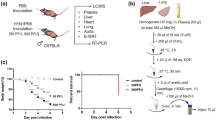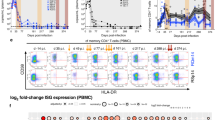Abstract
The mitochondrial pathway of swine influenza virus (SIV)-induced apoptosis was investigated using porcine kidney (PK-15) cells, swine testicle (ST) cells, and HeLa cervical carcinoma cells which are known not to support viral replication. As judged by cell morphology, annexin V staining, and DNA fragmentation, PK-15 and ST cells infected with three different subtypes of SIV (H1N1, H3N2, and H1N2) were obviously killed by apoptosis, not necrosis. SIV infection in PK-15 and HeLa cells was shown to decrease the cellular levels of Bcl-2 protein compared to that of mock-infected control cells at 24 h post-infection, whereas expression levels of Bax protein increased in the PK-15 cells, but did not increase in HeLa cells by SIV infection. Cytochrome c upregulation was also observed in cytosolic fractions of the PK-15 and HeLa cells infected with SIV. Apoptosome (a multi-protein complex consisting of cytochrome c, Apaf-1, caspase-9, and ATP) formation was confirmed by immunoprecipitation using cytochrome c antibody. Furthermore, SIV infection increased the cellular levels of TAJ, an activator of the JNK-stressing pathway, and the c-Jun protein in the PK-15 and HeLa cells. Taken together, these results suggest that the mitochondrial pathway should be implicated in the apoptosis of PK-15 cells induced by SIV infection.
Similar content being viewed by others
Article PDF
Author information
Authors and Affiliations
Rights and permissions
This is an Open Access article distributed under the terms of the Creative Commons Attribution Non-Commercial License (http://creativecommons.org/licenses/by-nc/3.0/) which permits unrestricted non-commercial use, distribution, and reproduction in any medium, provided the original work is properly cited.
About this article
Cite this article
Choi, Y., Kim, TK., Kim, CJ. et al. Activation of the intrinsic mitochondrial apoptotic pathway in swine influenza virus-mediated cell death. Exp Mol Med 38, 11–17 (2006). https://doi.org/10.1038/emm.2006.2
Published:
Issue date:
DOI: https://doi.org/10.1038/emm.2006.2
Keywords
This article is cited by
-
Respiratory epithelial cells in innate immunity to influenza virus infection
Cell and Tissue Research (2011)
-
Avian influenza virus A/chicken/Hubei/489/2004 (H5N1) induces caspase-dependent apoptosis in a cell-specific manner
Molecular and Cellular Biochemistry (2009)



